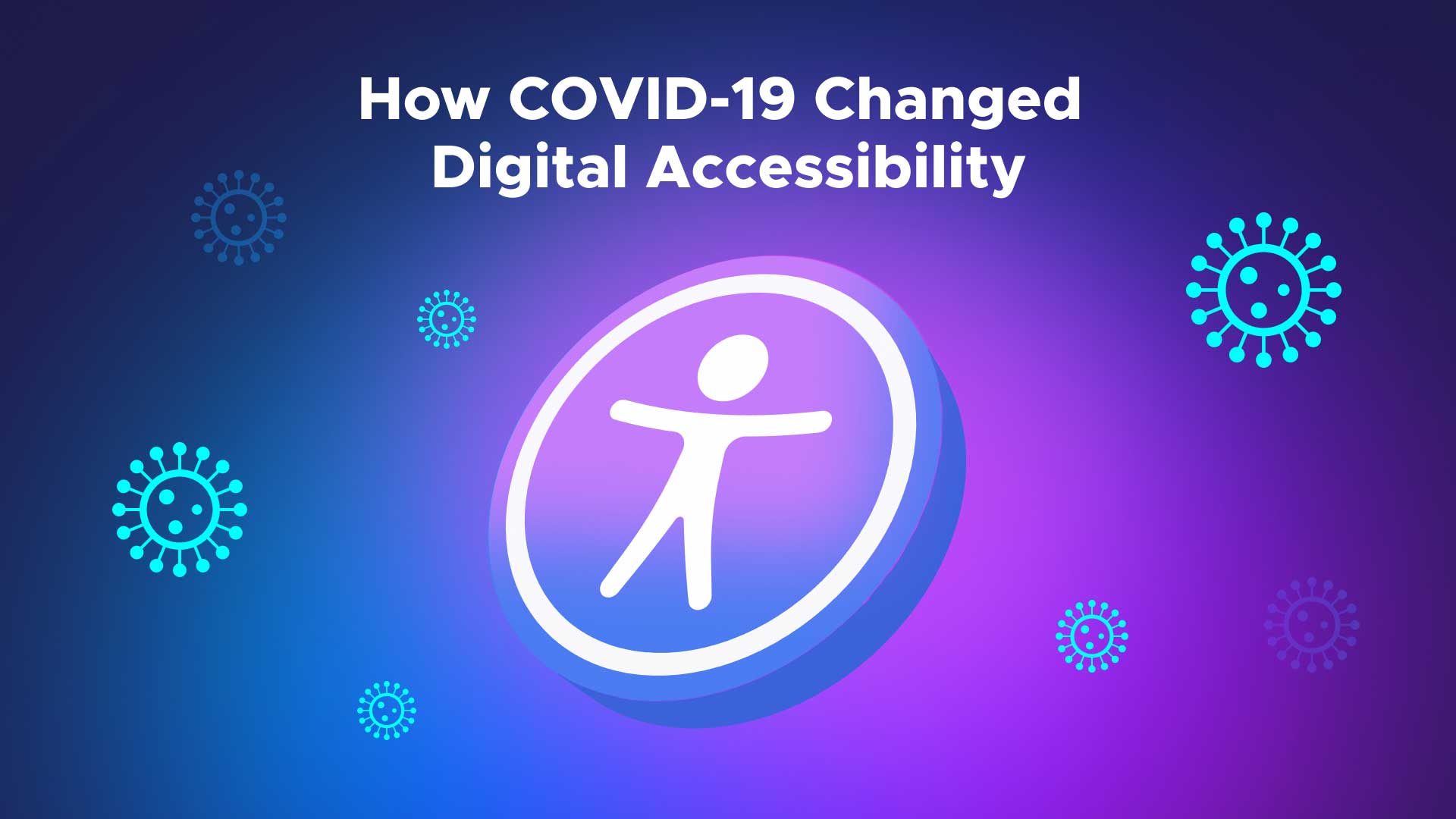How COVID-19 Changed Digital Accessibility

When businesses closed due to COVID-19, the public increased its reliance on the web to do just about everything—including addressing healthcare needs, household shopping, education, and even joining Zoom meetings instead of going to the office. Digital transformation was already occurring prior to COVID-19, but what happened as a result of the pandemic has been a whole different ball game. Now we are witnessing unexpected levels of reliance on the internet, which is expected to continue even after the pandemic is over, whenever that occurs.
The ever-evolving need for accessibility
Consider this: as more consumers stay online to conduct critical work, the focus on digital channels will be higher, which will, in turn, bring website accessibility into sharper focus. A recent study conducted during 2020 interviewed 18 participants, including Directors of Digital Accessibility at small, medium, and large-sized universities in the USA and the Director of Digital Accessibility at a U.S. state government agency.
This study concluded that the COVID-19 pandemic brought more attention to digital accessibility challenges and suggested that any organizations that do not have plans to address each of these challenges should start planning to do so. The research also showed that the pandemic assisted in highlighting the need for digital accessibility and that it has been a breakthrough situation, causing people to proactively address accessibility in a way that they otherwise might not have done.
Given this urgency to address digital accessibility challenges, many businesses and organizations are looking for ways to make their websites accessible—and fast. There are few easy steps to take initially, such as ensuring smooth keyboard-only navigation, testing form labels, and using scanning tools to uncover violations. But what if your business is facing an accessibility lawsuit and you don’t have time to take these first small steps?
Some businesses rely on solutions that force users to interact with the tool for the website to become accessible. While these user-triggered options can seem like a quick fix, they are actually creating the need for someone to engage with them in order for an accessible site to appear. Most of these quick-fix options will not provide you with a protective legal framework, as UserWay’s solution does.
UserWay’s AI-Powered Accessibility Widget automatically remediates a vast array of accessibility issues with no action required. All of the remediations and violation fixes are applied to the page as soon as it is loaded and are made available regardless of whether the widget is clicked, opened, or accessed. Whether users are aware that a widget exists on the page or not makes absolutely no difference.
There are also some solutions out there that may have disadvantages you need to be aware of, such as those that require users to download a new and unfamiliar tool (versus the technology with which they are familiar). These options may even require them to use a tool that could have accessibility problems of its own. Like every other business decision, it’s important to choose the right solution that fits your business needs.
The next evolution of accessibility
The COVID-19 crisis will leave a major imprint on how we move forward. The awareness gained from this past year can help in managing digital accessibility in the future. As we become more reliant on digital channels, full accessibility of these channels is crucial.
Companies that offer automated aids and professional advice to support the accessibility journey of each company are the answer. UserWay’s solutions come backed by the knowledge, support, and deep understanding of the field required to keep pace with modern technology.
It might be tempting to look for quick wins and easy fixes in the upcoming post-pandemic era, but we recommend that you focus on quality and impact. Remember, your efforts will make an even bigger difference when you choose to work with comprehensive long-term solutions.




Share